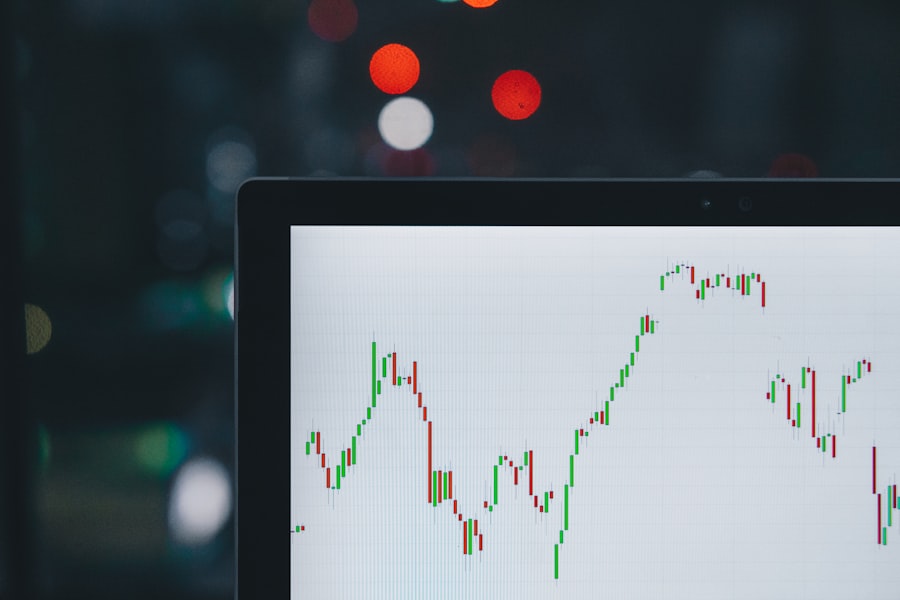Machine learning algorithms have emerged as a transformative force across various sectors, revolutionizing how data is analyzed and interpreted. At their core, these algorithms enable computers to learn from data, identify patterns, and make decisions with minimal human intervention. This capability is particularly significant in fields where vast amounts of data are generated, such as finance, healthcare, and marketing.
By leveraging statistical techniques and computational power, machine learning algorithms can uncover insights that would be nearly impossible for humans to discern. As the volume of data continues to grow exponentially, the importance of these algorithms in extracting actionable intelligence becomes increasingly apparent. In the realm of finance, machine learning has found a particularly fertile ground for application, especially in stock market prediction.
The stock market is characterized by its complexity and volatility, driven by a multitude of factors ranging from economic indicators to investor sentiment. Traditional methods of analysis often fall short in capturing the nuances of market behavior. However, machine learning algorithms can process vast datasets, including historical prices, trading volumes, and even social media sentiment, to generate predictions about future market movements.
This capability not only enhances the accuracy of forecasts but also provides traders and investors with a competitive edge in an ever-evolving landscape.
Key Takeaways
- Machine learning algorithms are used to analyze and interpret patterns in data, making them valuable tools for predicting stock market trends.
- Understanding stock market trends is crucial for investors and traders to make informed decisions and maximize their returns.
- Predicting stock market trends using machine learning algorithms can help investors and traders anticipate market movements and make profitable trades.
- There are various types of machine learning algorithms, such as regression, classification, and clustering, that can be used for stock market prediction.
- Evaluating the performance of machine learning algorithms for stock market prediction involves assessing their accuracy, precision, recall, and F1 score to determine their effectiveness.
- Challenges and limitations of using machine learning algorithms for stock market prediction include data quality, overfitting, and the unpredictable nature of financial markets.
- Future trends in machine learning algorithms for stock market prediction may involve the use of advanced techniques such as deep learning, reinforcement learning, and natural language processing to improve prediction accuracy.
Understanding Stock Market Trends
Types of Stock Market Trends
Stock market trends can be broadly categorized into three types: upward (bull markets), downward (bear markets), and sideways (ranging markets). Each of these trends reflects the collective sentiment of investors and traders regarding the future performance of stocks.
Influencing Factors of Stock Market Trends
Understanding these trends is crucial for making informed investment decisions, as they can significantly influence the timing and nature of trades. Moreover, stock market trends are influenced by a myriad of factors, including economic indicators such as GDP growth rates, unemployment figures, and inflation rates. Additionally, geopolitical events, corporate earnings reports, and changes in interest rates can all impact market sentiment and lead to shifts in trends.
The Role of Machine Learning in Analyzing Stock Market Trends
Machine learning algorithms excel at analyzing these multifaceted influences by processing large datasets and identifying correlations that may not be immediately apparent to human analysts. By understanding the dynamics of stock market trends, investors can better position themselves to capitalize on potential opportunities while mitigating risks.
Importance of Predicting Stock Market Trends
The ability to predict stock market trends holds immense significance for investors and financial institutions alike. Accurate predictions can lead to substantial financial gains, allowing investors to buy low and sell high, thereby maximizing their returns. Furthermore, effective trend prediction can enhance risk management strategies by enabling investors to identify potential downturns before they occur.
In an environment where market fluctuations can result in significant losses, having a reliable forecasting mechanism is invaluable. Beyond individual investors, the implications of accurate stock market predictions extend to broader economic stability. Financial institutions rely on predictive models to inform their trading strategies and investment decisions.
When these institutions can anticipate market movements with greater accuracy, they contribute to more efficient markets overall. This efficiency can lead to improved liquidity and reduced volatility, fostering a healthier investment climate. As such, the importance of predicting stock market trends cannot be overstated; it is a critical component of both personal investment success and the overall functioning of financial markets.
Types of Machine Learning Algorithms for Stock Market Prediction
A variety of machine learning algorithms can be employed for stock market prediction, each with its unique strengths and weaknesses. Supervised learning algorithms, such as linear regression and support vector machines (SVM), are commonly used for this purpose. These algorithms rely on labeled datasets to learn from historical data and make predictions about future stock prices.
For instance, linear regression can model the relationship between various economic indicators and stock prices, providing insights into how changes in these indicators may affect market performance. On the other hand, unsupervised learning algorithms like clustering techniques can be utilized to identify patterns within unlabelled data. These algorithms can group stocks with similar performance characteristics or identify anomalies that may signal potential investment opportunities.
Additionally, reinforcement learning has gained traction in recent years as a method for developing trading strategies that adapt over time based on feedback from the market environment. By employing a combination of these machine learning techniques, investors can create robust predictive models that enhance their decision-making processes.
Evaluating the Performance of Machine Learning Algorithms
Evaluating the performance of machine learning algorithms is a critical step in ensuring their effectiveness in stock market prediction. Various metrics can be employed to assess how well an algorithm performs its intended task. Common evaluation metrics include accuracy, precision, recall, and F1 score, each providing different insights into the algorithm’s predictive capabilities.
For instance, accuracy measures the proportion of correct predictions made by the model, while precision focuses on the quality of positive predictions. These metrics help investors understand not only how often an algorithm is correct but also how reliable its predictions are in practical scenarios. In addition to these traditional metrics, backtesting is another essential method for evaluating machine learning models in the context of stock market prediction.
Backtesting involves applying the predictive model to historical data to assess how it would have performed in real-world trading scenarios. This process allows investors to gauge the model’s effectiveness over time and under varying market conditions. By combining quantitative metrics with qualitative assessments from backtesting results, investors can make informed decisions about which machine learning algorithms are best suited for their specific investment strategies.
Challenges and Limitations of Using Machine Learning Algorithms for Stock Market Prediction
Challenges in Stock Market Prediction Using Machine Learning
Employing machine learning algorithms for stock market prediction comes with its own set of challenges and limitations. One significant hurdle is the inherent unpredictability of financial markets. Markets are influenced by countless variables—many of which are difficult to quantify or predict—such as investor psychology and external economic shocks.
Unpredictability and Overfitting
This unpredictability can lead to overfitting, where a model performs exceptionally well on historical data but fails to generalize effectively to new data or changing market conditions. Overfitting can result in inaccurate predictions and undermine the reliability of the model.
Data Quality and Availability Issues
Another challenge lies in the quality and availability of data. Machine learning algorithms require vast amounts of high-quality data to function optimally; however, financial data can often be noisy or incomplete. Issues such as missing values or erroneous entries can skew results and lead to inaccurate predictions.
The Need for Continuous Adaptation
Furthermore, the rapid pace at which financial markets evolve means that models must be continuously updated and retrained to remain relevant. This need for constant adaptation adds another layer of complexity to the implementation of machine learning algorithms in stock market prediction.
Future Trends in Machine Learning Algorithms for Stock Market Prediction
Looking ahead, the future of machine learning algorithms in stock market prediction appears promising yet complex. As technology continues to advance, we can expect more sophisticated algorithms that leverage deep learning techniques to analyze vast datasets with greater accuracy. Deep learning models, particularly neural networks, have shown remarkable potential in recognizing intricate patterns within data that traditional models may overlook.
This capability could lead to more nuanced predictions that account for a wider array of influencing factors. Moreover, the integration of alternative data sources—such as social media sentiment analysis or satellite imagery—into predictive models is likely to gain traction in the coming years. By incorporating diverse datasets beyond traditional financial metrics, machine learning algorithms can provide a more holistic view of market dynamics.
As these technologies evolve and become more accessible, we may witness a democratization of advanced predictive analytics in finance, empowering individual investors alongside institutional players. Ultimately, the intersection of machine learning and stock market prediction holds great potential for reshaping investment strategies and enhancing decision-making processes in an increasingly complex financial landscape.
If you’re interested in exploring how technology can further enhance your understanding of stock market trends through machine learning algorithms, you might find it beneficial to stay updated with the latest tech products that can support such sophisticated computing tasks. A relevant resource to consider is an article that reviews the best tech products of 2023, which could include powerful laptops and devices suitable for running complex machine learning applications. You can read more about these essential tools by visiting The Best Tech Products 2023. This guide could help you choose the right hardware to optimize your predictive analysis in stock market trends.
FAQs
What are machine learning algorithms?
Machine learning algorithms are a set of instructions and statistical models that enable computers to learn and make predictions or decisions without being explicitly programmed. These algorithms use historical data to identify patterns and make predictions about future outcomes.
How are machine learning algorithms used in predicting stock market trends?
Machine learning algorithms are used in predicting stock market trends by analyzing historical stock data, market trends, and other relevant factors to identify patterns and make predictions about future stock prices. These algorithms can help traders and investors make informed decisions about buying, selling, or holding stocks.
What are some common machine learning algorithms used for predicting stock market trends?
Some common machine learning algorithms used for predicting stock market trends include linear regression, decision trees, random forests, support vector machines, and neural networks. Each algorithm has its own strengths and weaknesses, and may be used in combination to improve prediction accuracy.
What are the challenges of using machine learning algorithms for predicting stock market trends?
Challenges of using machine learning algorithms for predicting stock market trends include the complexity and volatility of the stock market, the need for high-quality and relevant data, the risk of overfitting models to historical data, and the difficulty of accurately predicting unpredictable events or market shifts.
How accurate are machine learning algorithms in predicting stock market trends?
The accuracy of machine learning algorithms in predicting stock market trends can vary depending on the quality of the data, the choice of algorithm, and the specific market conditions. While these algorithms can provide valuable insights and predictions, it’s important to note that no algorithm can guarantee 100% accuracy in predicting stock market trends.



